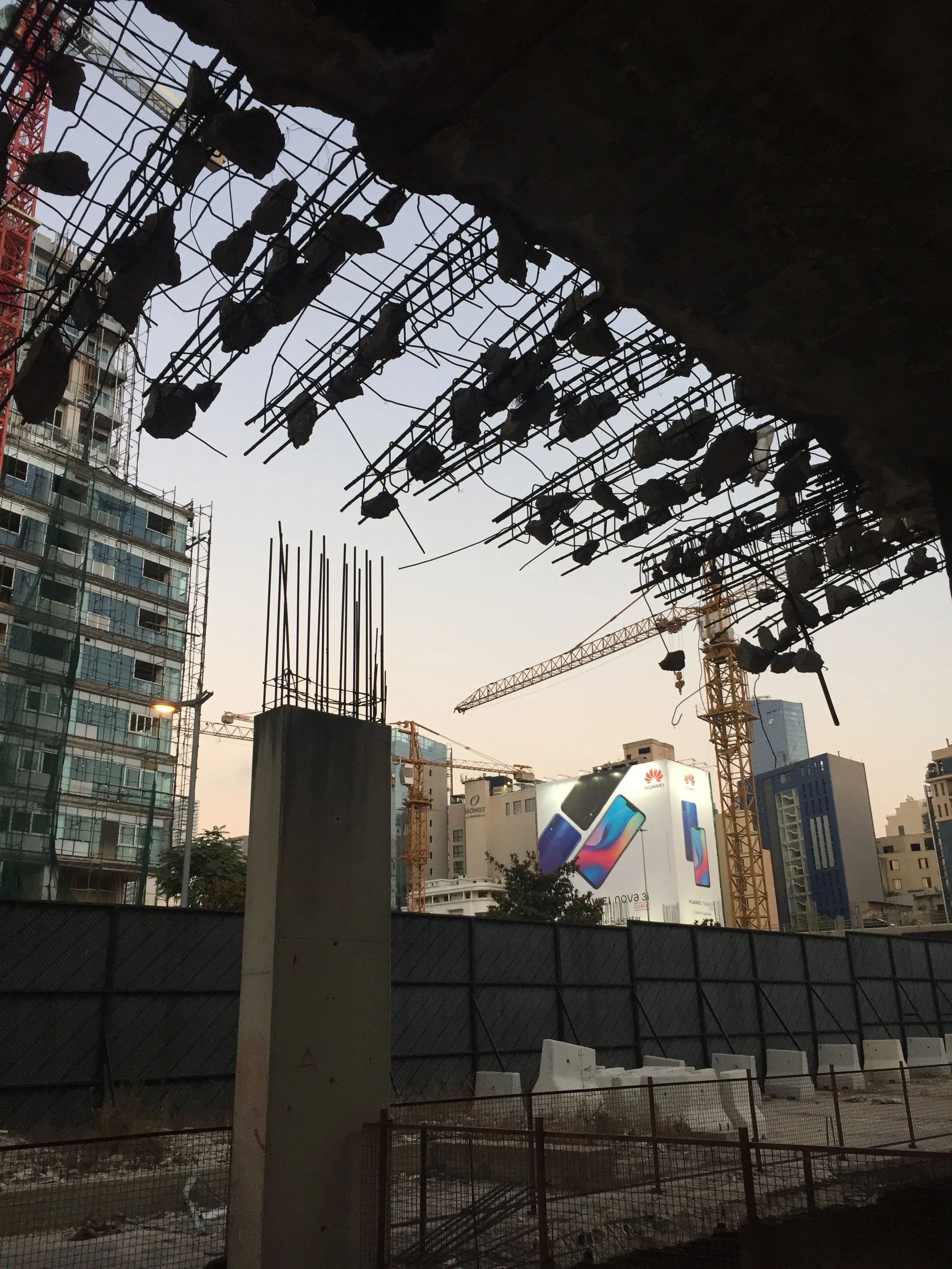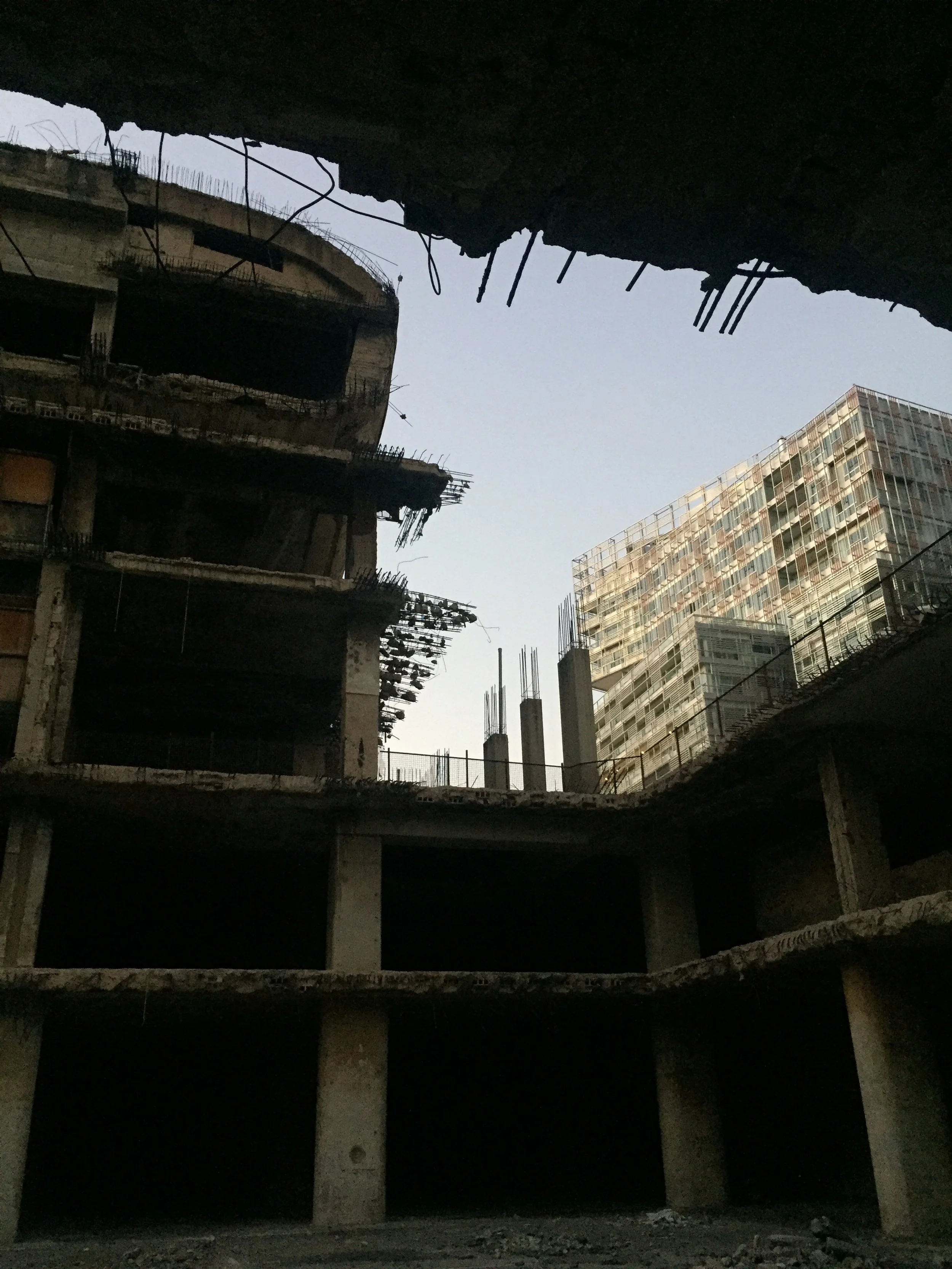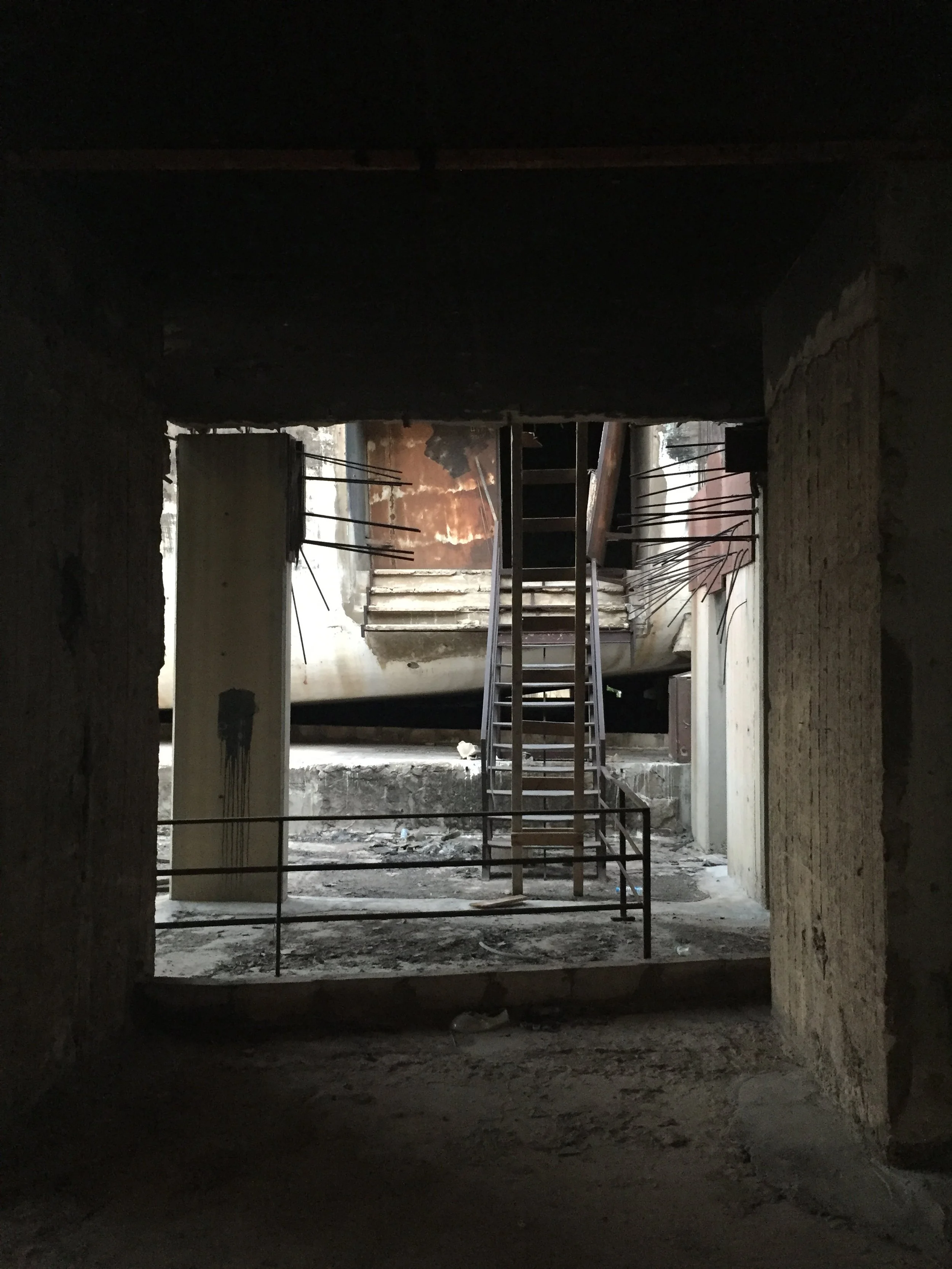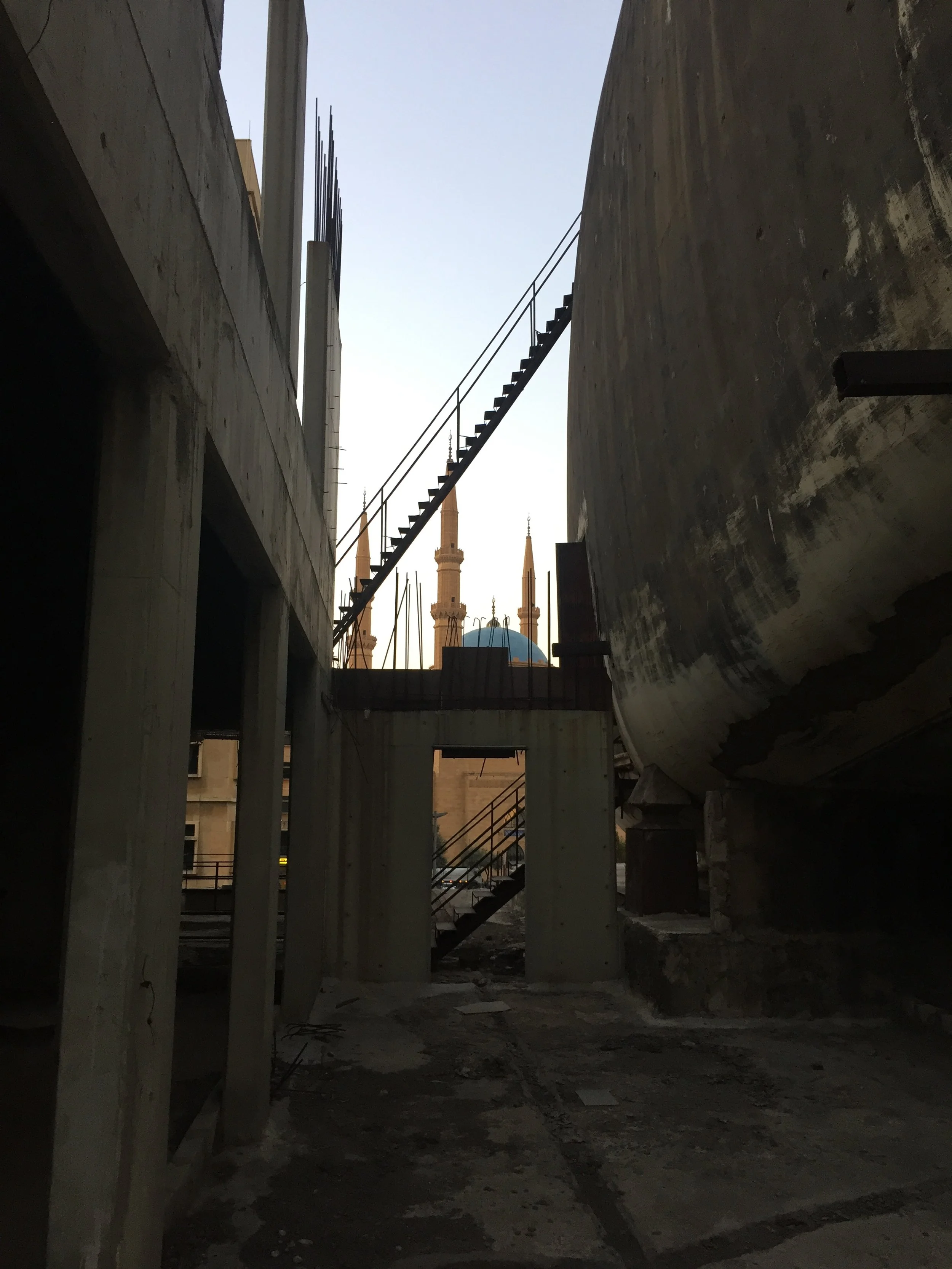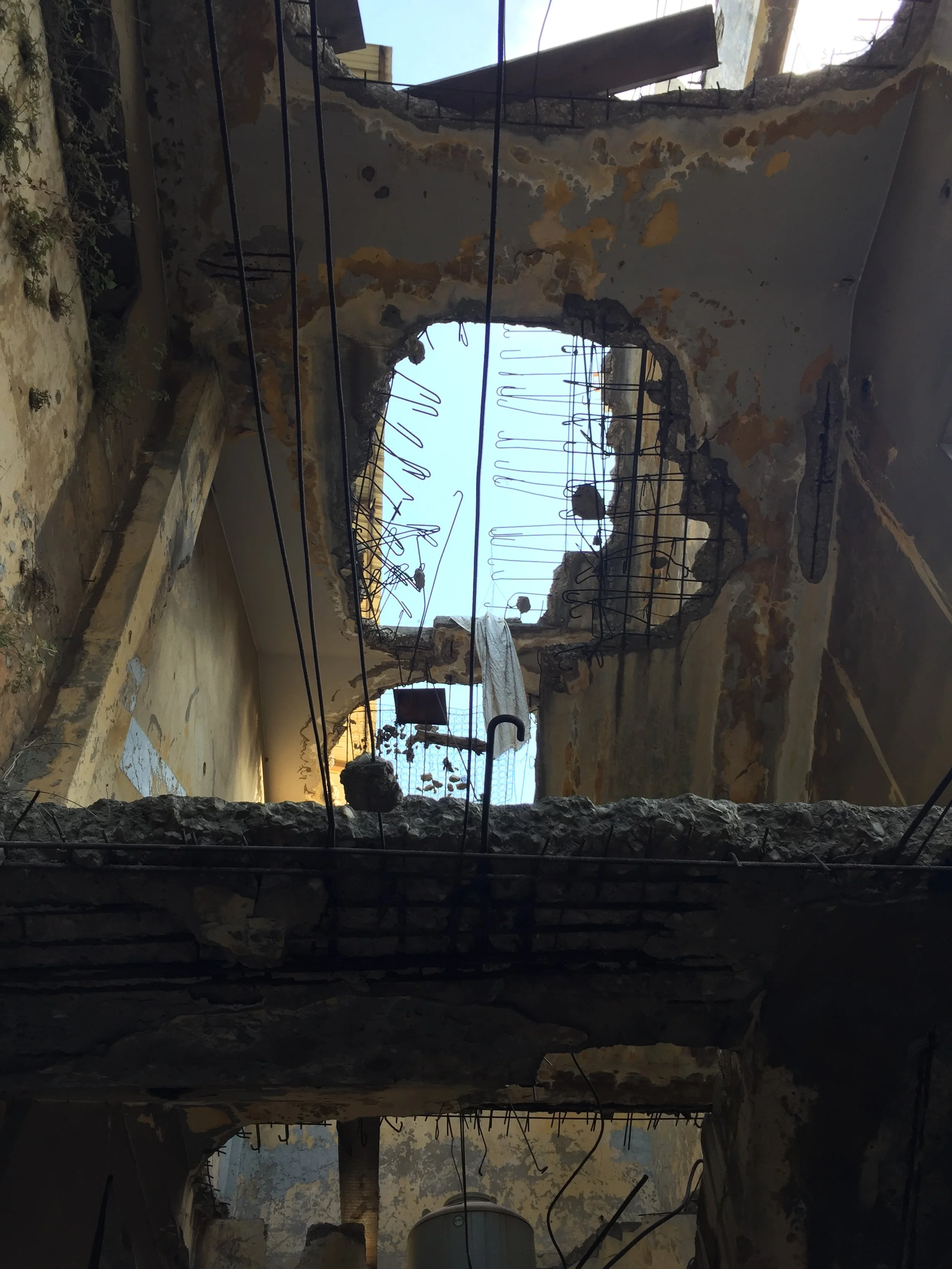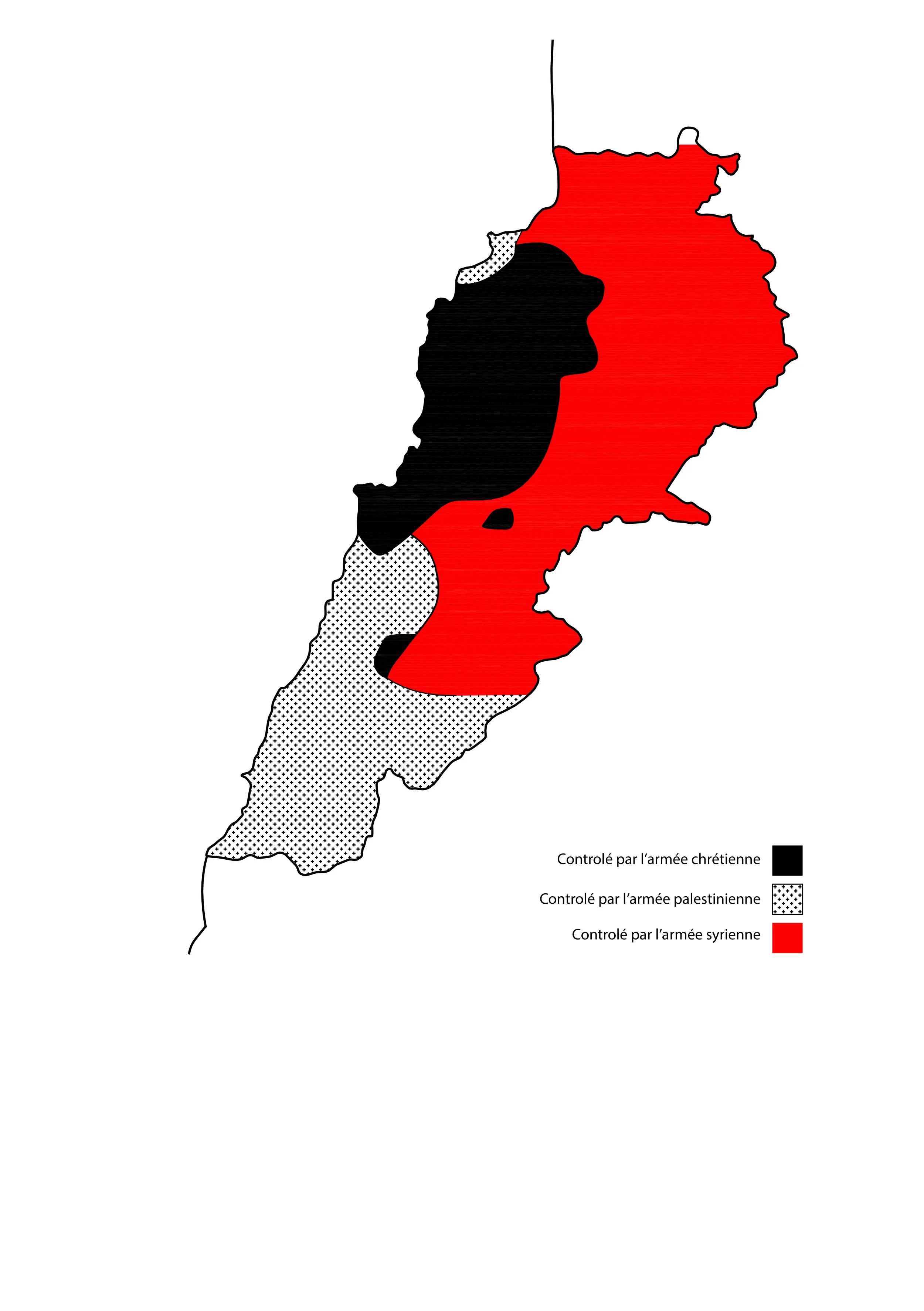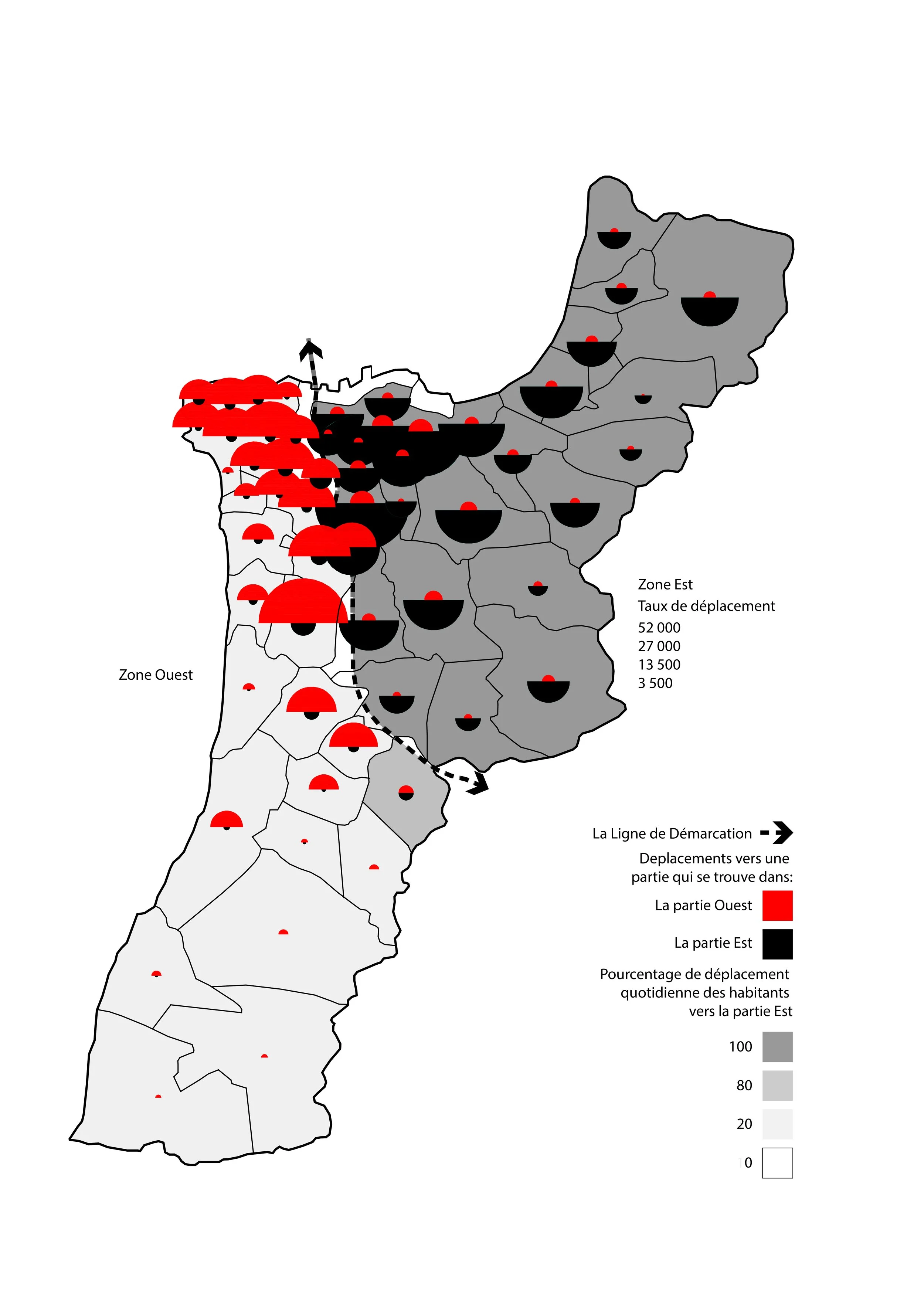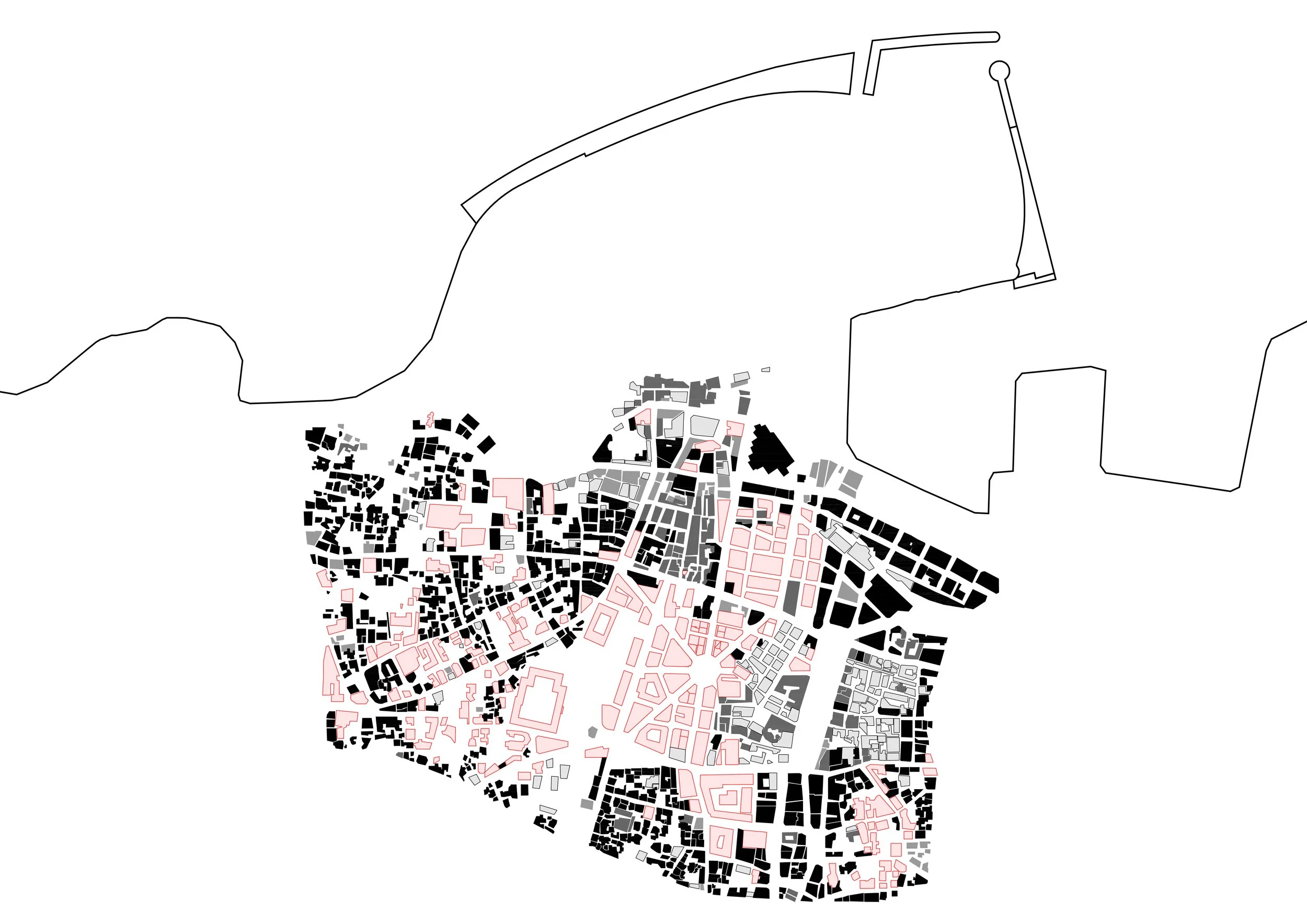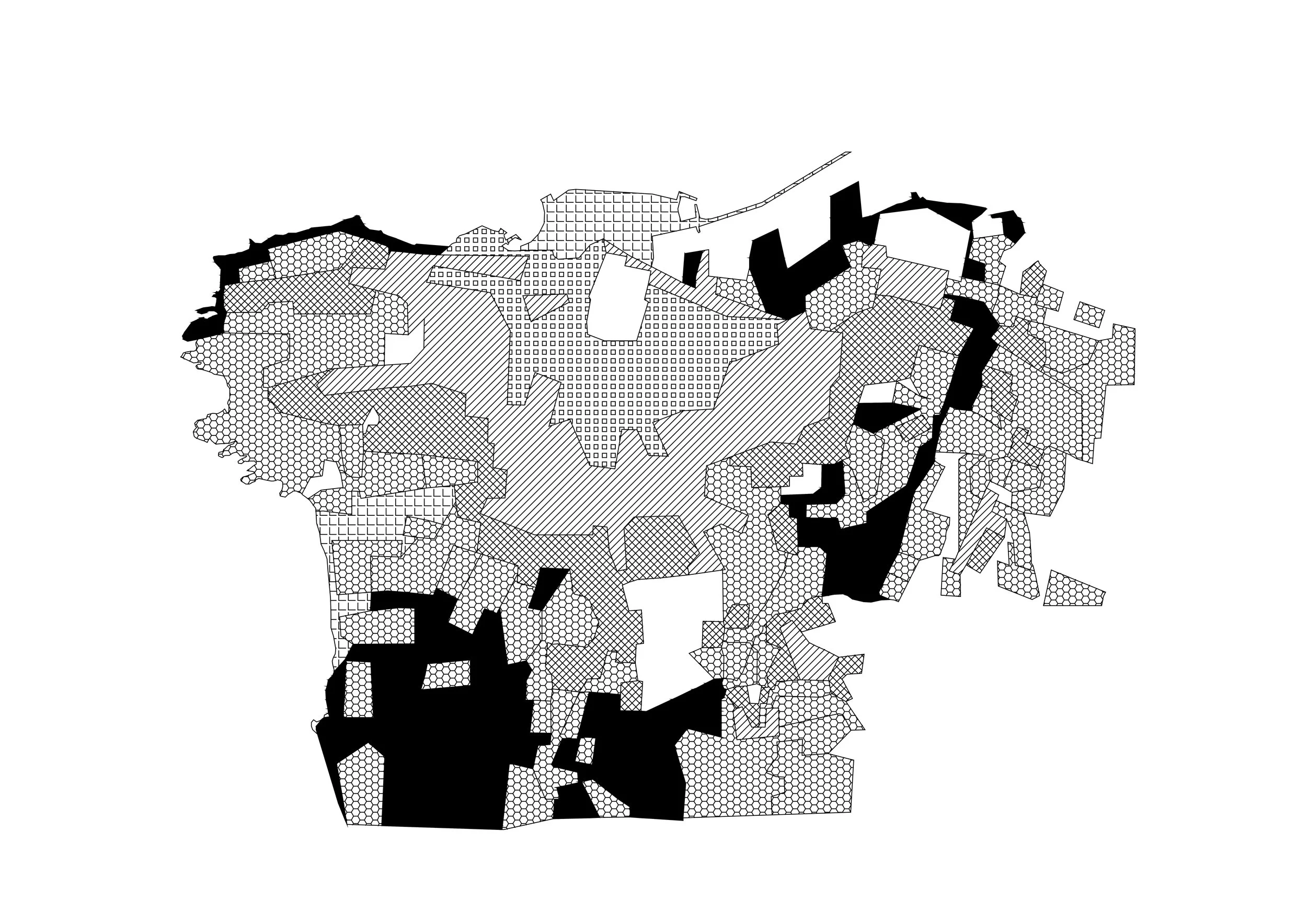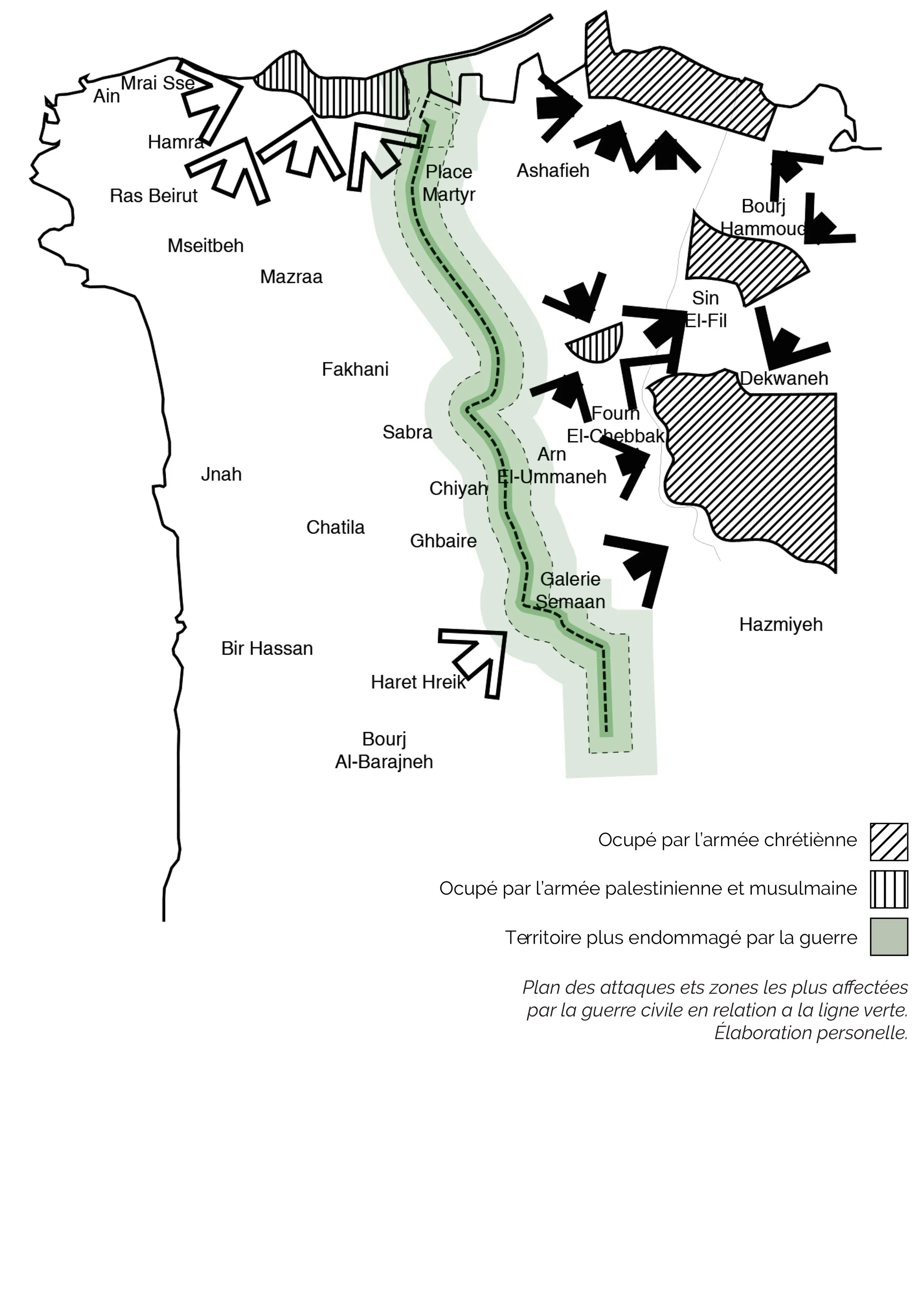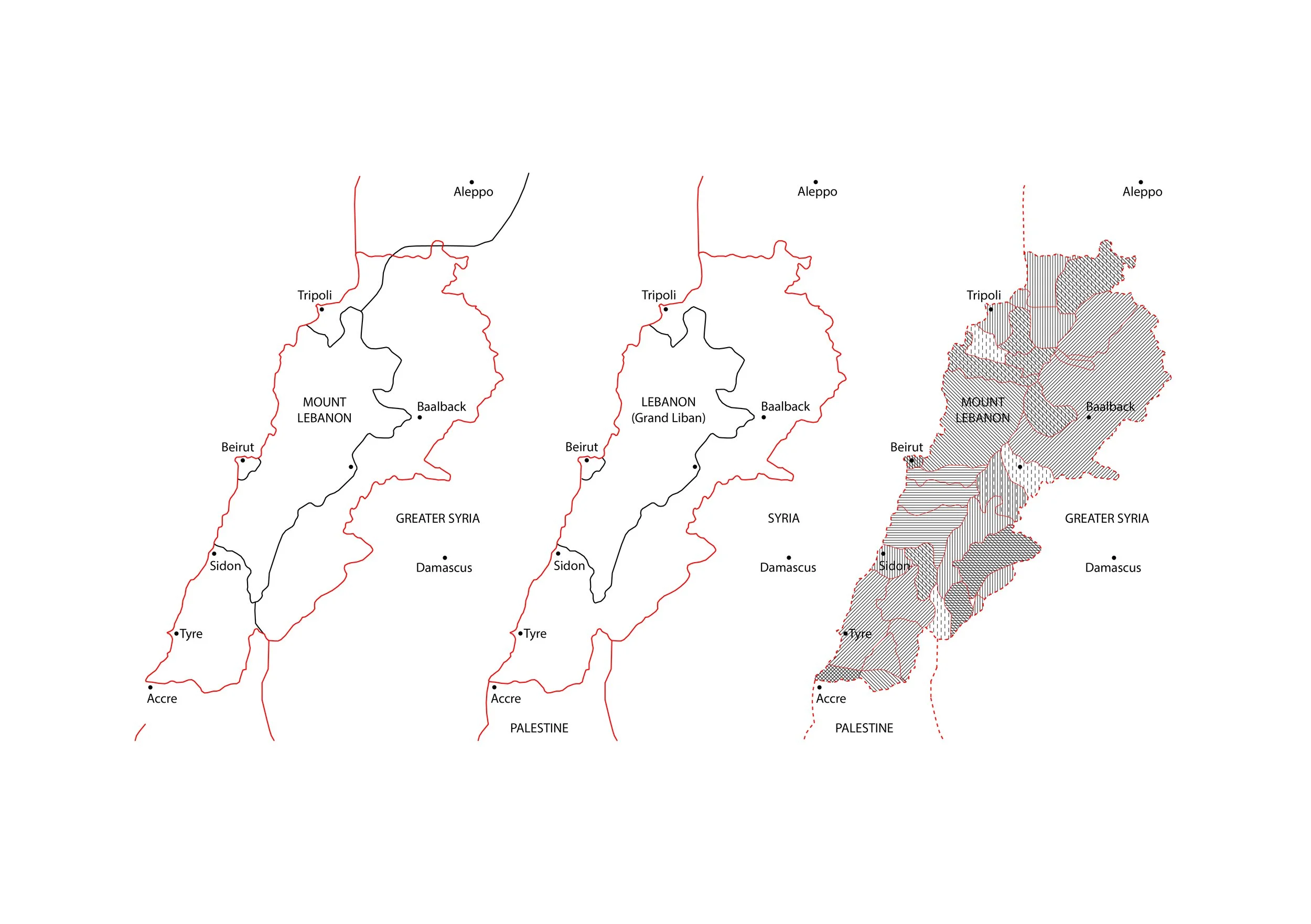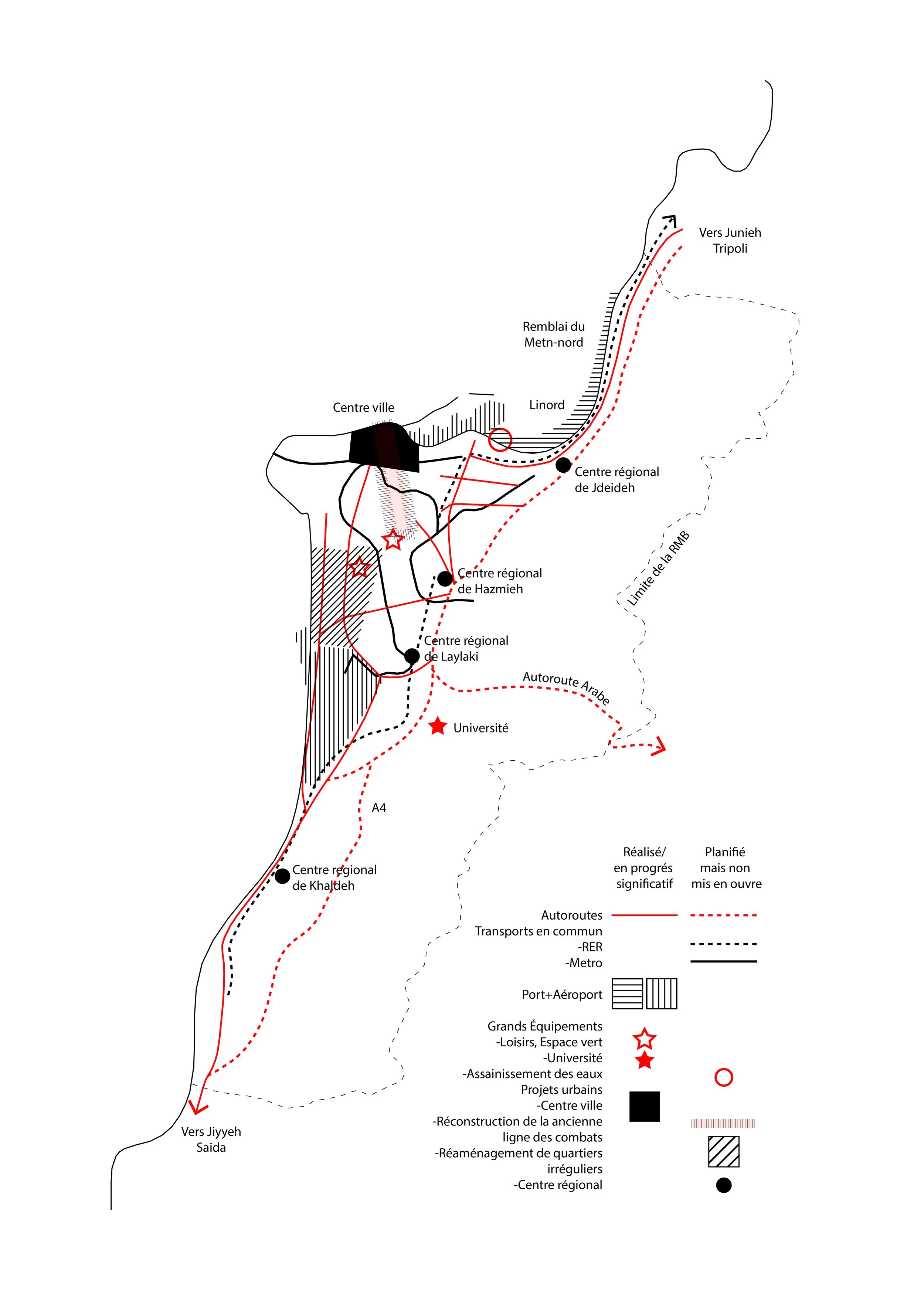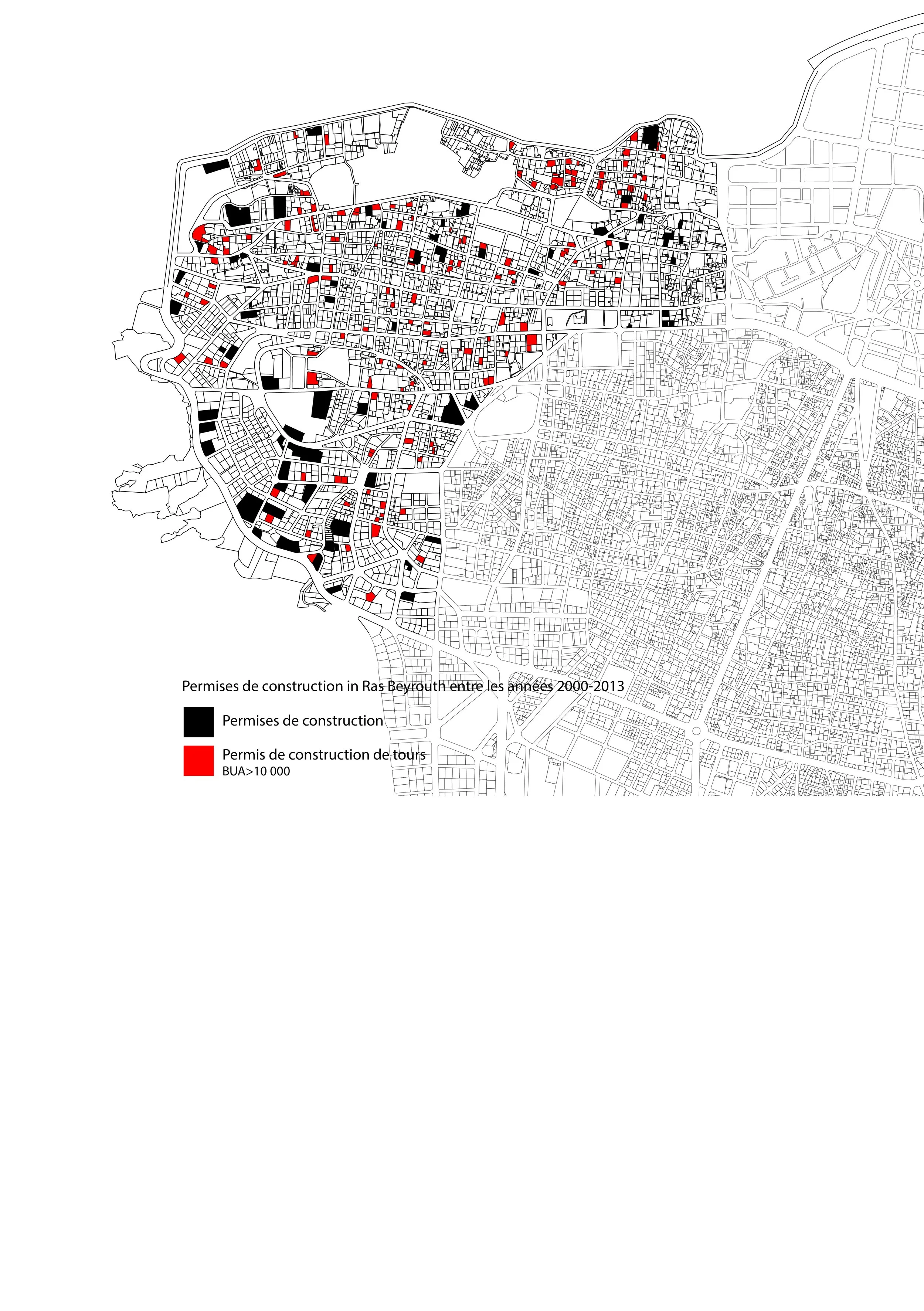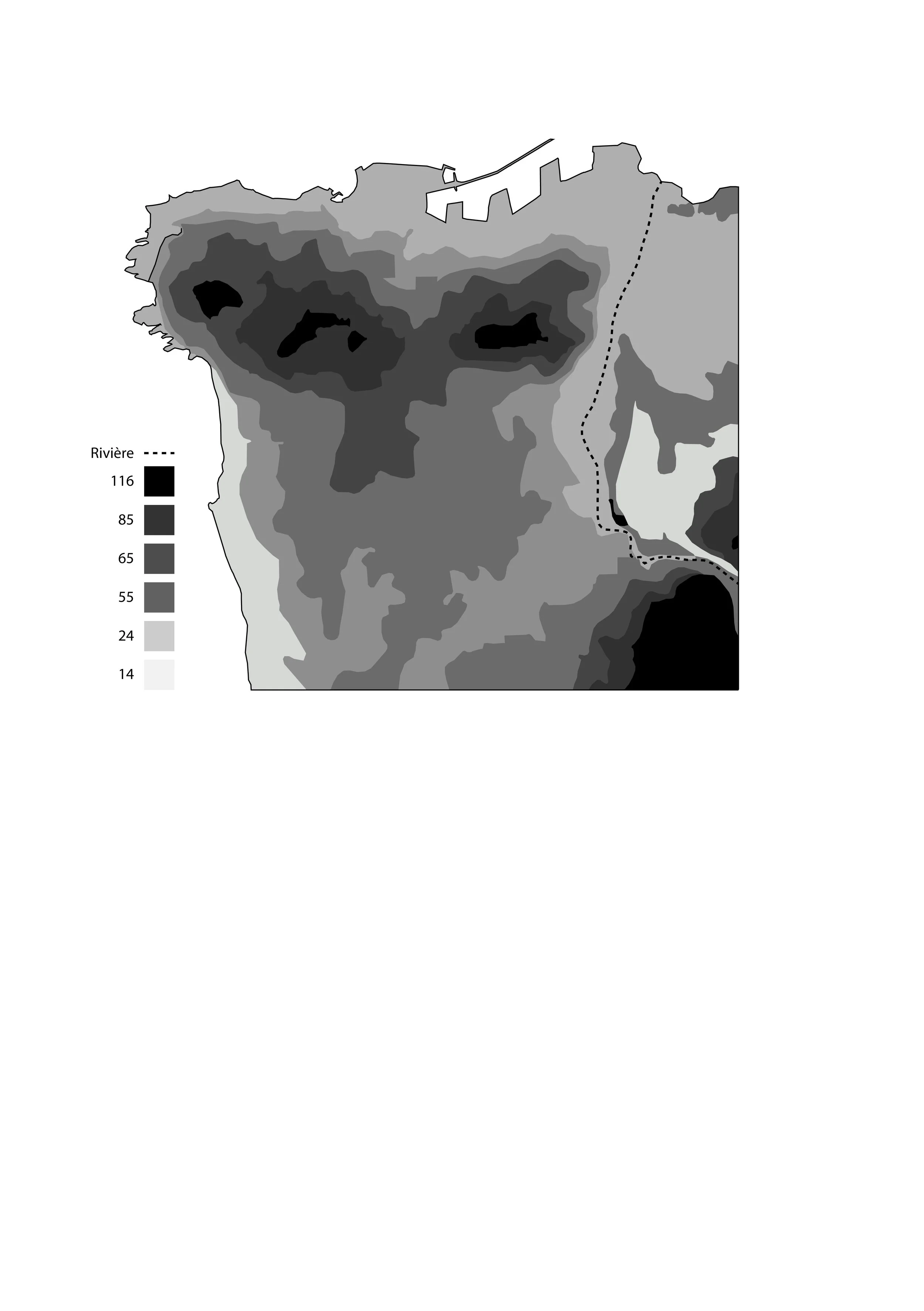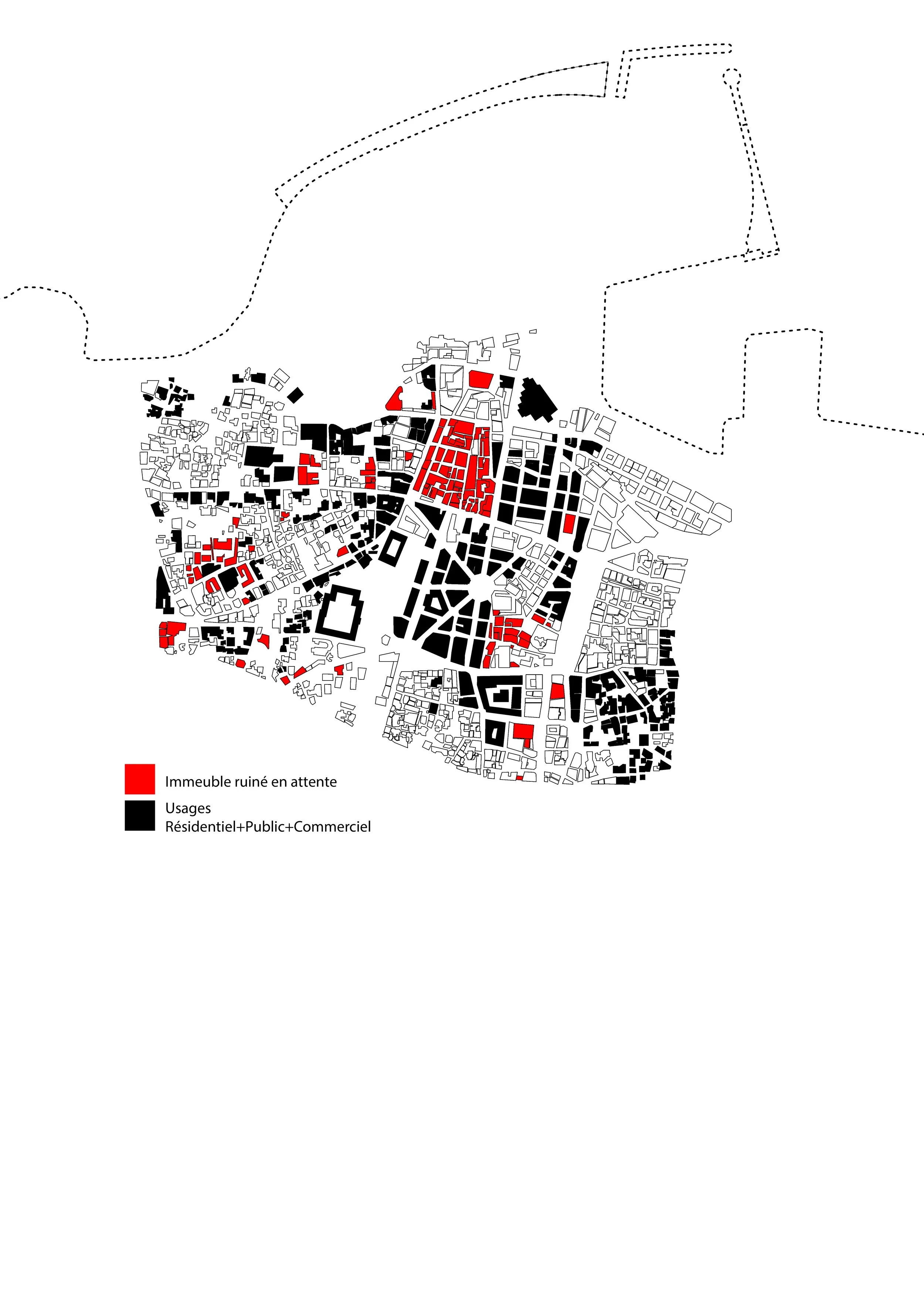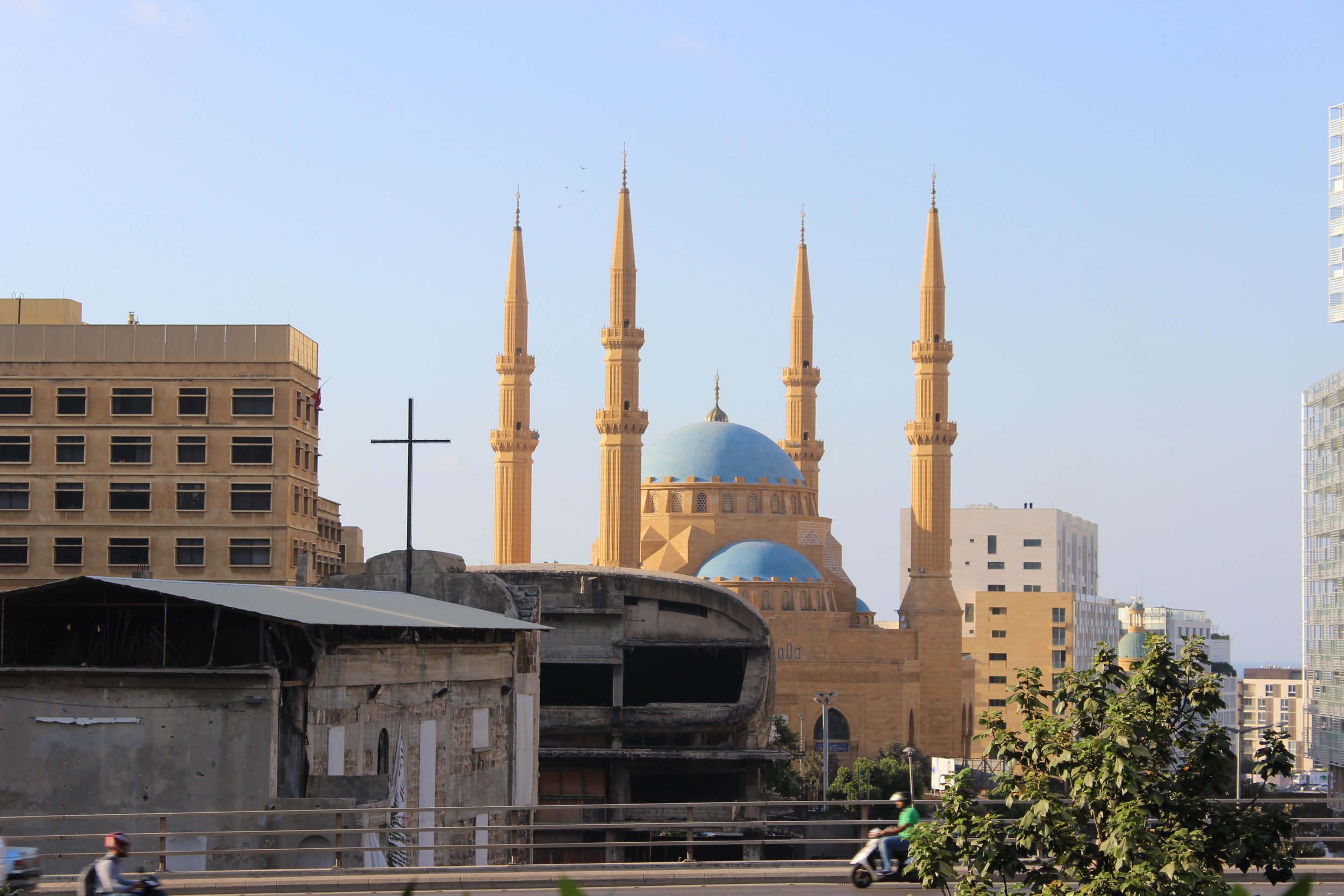
ISLE
URBAN STUDY
MEMORIAL AND CULTURAL CENTER
SURFACE: 37 000m²
LOCATION : BEIRUT, LEBANON
The urban state of nowadays Beirut comes from its rich modern history. In order to understand the urban fabric and the identity of the Lebanese capital, you must take into account two major events. Firstly, the civil war that has divided the city into two: the Christian part and the Muslim part. Secondly, the post-war reconstruction which induced a well-known loss of identity.
Beirut, like Berlin, Warsaw or Rotterdam and so many other cities, has been destroyed and rebuilt. Civil war has led to the self-destruction of the country by dividing the Lebanese people, every side seeking by any means possible to destroy the other’s identity. The reconstruction failed to create a space to reunite the diverse Beiruti identities. However, it created a center on an international scale, promoting investment and trade, that highlights the country’s very efficient and well-thought banking and economic system. After the war, forgetting the past was necessary to ensure the national unity of a country that had never been united before. Indeed, the wounds of the civil war are still deep in the Lebanese society. Even so, young generations want a place to remember these depreciated times. But the (almost) total lack of testimony from older generations hinders the birth of new ideas or projects…
So, it is crucial to dedicate one project to the civil war, in order to be able to take a step back and to recover from these dark times. Beirut needs an architecture that federates all of Lebanese people, whether they live in the West or in the East. They should have an architecture that takes the past into consideration. It is now time for reconciliation!
Many Beirutis don’t cross the green line. Even if it is perfectly safe, they prefer to concentrate their activities in a specific area, often in the periphery but not far from the city center, and in places that can be easily identified, socially and culturally (religions, communities). The location and program are very important to make such an urban project succeed. Indeed, a wrong location can easily generate conflicts, especially if one side feels neglected compared to the other: so, it is important to keep a neutral and unbiased position. The green line meets all these requirements since it is a no man’s land. Even nowadays it is difficult to know who benefits from it. So, a project that is carried out in this area must preserve its impartiality, in a way that this project becomes a gathering and a meeting place that enables interactions between the divided sides.
The existing monument is usually called “the egg” and is considered as a neutral place, where all Lebanese people can identify themselves. In ruins today, it has been built originally as a movie theater but it never opened, since its construction was interrupted by the civil war. The egg belongs to a commercial complex called “city center” and is located between a church and a mosque, hence the idea to create links between the two buildings, and with the whole city of Beirut. Moreover, until now, there is no space dedicated to social events, which are however very important in the Lebanese society. On addition to these events that gather a lot of people, intergenerational spaces, workshops and concerts would take place in order to recreate links between generations (to pass on experience…). The idea is to have a dynamic project running the whole week and not only in the weekend for big events.
From an urban planning perspective, this project should first be elaborated on a larger scale, throughout the entire city, in a way that it recreates the network between the different monuments and landmarks of Beirut. This project must take its place in this network which is disseminated through the city and it must give it a role and a purpose more deeply rooted in the city. What we suggest here is to reset the tramway, a public transport that links together not only the monuments but also the citizens from the East and the West sides, in order to bring them to the project.
From an architectural perspective, the project requires all the existing parts of the building to be preserved. The point is not to build a new architecture that would be as important as the one that already exists but to work on it in an almost invisible manner, in order to highlight the different main aspects of the project, such as the hole that represents a fracture of this city, or the axis between the church and the mosque.
SITE CONTEXT
URBAN INTERVENTION
MAP OF FUTUR TRAMWAY LINE GREEN LINE
TRANSPORT BEIRUT
SITE ANALYSIS
PLANS
SECTION AA’

SECTION BB’


